
Paul Baniel, CPA, CGMA | 6 The Ultimate Team Player September | October 2023 | Vol. 19 No. 4 A publication of the Wisconsin Institute of CPAs | wicpa.org Plus: Alternative practice structures | 12 Integrating ESG into strategy | 16 New technologies and security | 20 The CPA as expert witness | 26
CPACharge has made it easy and inexpensive to accept payments via credit card. I’m getting paid faster, and clients are able to pay their bills with no hassles.
–Cantor Forensic Accounting, PLLC






Trusted by accounting industry professionals nationwide, CPACharge is a simple, web-based solution that allows you to securely accept client credit and eCheck payments from anywhere.


Get started with CPACharge today cpacharge.com/wicpa 866-327-0321 Client Invoice #0123-A TOTAL: $3,000.00 Your Client **** **** **** 9995 *** PAY CPA
increase in cash flow with online payments
of consumers prefer to pay electronically
of bills sent online are paid in 24 hours CPACharge is a registered agent of Synovus Bank, Columbus, GA., and Fifth Third Bank, N.A., Cincinnati, OH. AffiniPay customers experienced 22% increase on average in revenue per firm using online billing solutions
22%
65%
62%
+
Features Columns
6 The ultimate team player Paul Baniel, CPA, CGMA, is retiring from his role as VP of finance and administration for the Green Bay Packers. He has also held executive positions for the Milwaukee Brewers and Potawatomi Hotel and Casino.
 By Ken Wysocky
By Ken Wysocky
12 Alternative practice structures and opportunities
There are options and considerations CPAs should take into account when thinking of establishing or entering into a nontraditional firm structure.
By Dr. Sean Stein Smith, DBA, CPA,
CMA,
CGMA, CFE
16 Integrating ESG into your business strategy

Discover some of the benefits and pitfalls of integrating environmental, social, and governance (ESG) into your business strategy.
By Timothy P. Hedley, PhD, CPA, CFF, CFE
20 Managing the data risk and security implications of outsourced technology
It has become crucial for organizations to understand the risks associated with existing and new technologies and to address them with appropriate controls.
 By Christopher Semrow, CPA, CISA
By Christopher Semrow, CPA, CISA
26 TAX PRACTICE
Preparing for and providing expert witness testimony
The expert testimony of a CPA can be a very powerful tool. Learn how to prepare for and provide expert witness testimony in a tax case.
By Michael G. Goller, Esq.
32 ACCOUNTING & AUDITING
Valuing cryptocurrency and digital assets
As more companies invest in digital assets, they are looking to CPAs to help them with the accounting treatment — and CPAs are looking for guidance on how to audit them.
By Kenneth A. Heaslip, CPA, CGMA, MBA, MS
36 PROFESSIONAL DEVELOPMENT
5 common-sense steps to successful networking
Networking might be neither a traditional nor instinctual skill, but it is vital for seeking new business and expanding your network.
By Daniel Kochka, CPA, CFE, MBA
38 LEADERSHIP
5 tips for creating an impactful off-site team retreat
The best leaders recognize the need to get off the hamster wheel of never-ending operational tasks to focus on building a cohesive, highperforming team.
By Jon Lokhorst, CPA, PCC
Departments
3 Outlook | chair’s letter
16
4 In Touch | president & CEO’s message
19 Welcome | new members
24 Memorials | departed members
30 Kudos | members in the news
1 On Balance September | October 2023 wicpa.org
October
No.
A publication of the Wisconsin Institute of CPAs | wicpa.org
September |
2023 Vol. 19
4
32
6
On Balance is published five times a year by the Wisconsin Institute of Certified Public Accountants (WICPA). Change of address should be sent to: Membership, W233N2080 Ridgeview Pkwy, Suite 201, Waukesha, WI 53188; Phone: 262-785-0445 or 800-772-6939; Fax: 262-785-0838; email: comments@wicpa.org. Statements and opinions expressed are those of the authors and not necessarily those of the WICPA. Publication of an advertisement does not constitute an endorsement of the product or service by On Balance or the WICPA. Articles may be reproduced with permission. © Copyright 2023 On Balance
2023-2024
WICPA OFFICERS/BOARD MEMBERS INSIDE STAFF
Chair
Matthew J. Schaefer, CPA, CGMA
Chair-elect
Ryan J. Hanson, CPA, CGMA
Past Chair
Steven A. Pullara, CPA, CGMA
Secretary/Treasurer
Lucien A. Beaudry, CPA, JD Directors
Christopher M. Cholka, CPA, CGMA
Jessica B. Gatzke, CPA, MST
Tori M. Morrow, CPA, CGMA, MBA

Donna R. Scaffidi, CPA
Stacy A. Stinson, CPA
AICPA Council
Ruth A. Kallio-Mielke, CPA
Neil R. Keller, CPA/ABV, CVA
President & CEO
Tammy J. Hofstede
Design & Layout
Brett Stallman
Advertising
Sue Daniels
Editor
Marcia Tillett-Zinzow
Printing Special Editions
Check out our featured member benefit providers
Becker
Since launching its CPA Exam Review over 50 years ago, Becker Professional Education has been committed to providing students the tools they need to prepare, pass and be empowered to excel — on exam day and at every level of their professional careers.
EPSA USA
EPSA USA is focused on helping companies of all sizes take advantage of the R&D tax credit at the federal/state level. Our experts help identify qualified research expenses that yield a large tax benefit for our clients. Complimentary assessment is available at www.us.epsa.com.
Spectrum Investment Advisors
Spectrum Investment Advisors
co-sponsors the annual Retirement Plan Investment Seminar, which offers WICPA members CPE credits at a nominal cost. WICPA members can work directly with Spectrum to receive plan consulting services for their retirement plan program as well as individual wealth/asset management services.
These affinity partners and more can be found at wicpa.org/discounts.
On Balance September | October 2023 2 wicpa.org
us online!
Join
Planning and the Talent Shortage
By Matthew J. Schaefer, CPA, CGMA

During our short Wisconsin summer months (which are now past), most of us try to plan our vacations with family and friends. I most recently planned a vacation through Indiana, Kentucky and Ohio with my family, using a notebook I use for planning. I referred to it often, and it kept us on track.
But personal planning is one thing — planning for longterm change is quite another. It typically requires a focus on ideas and questions and a good dose of patience. Whether you are planning an audit or tax engagement, preparing journal entries or creating monthly reports, a plan needs to be implemented and executed to complete those services. A plan is also required for changes within our profession to address the talent shortage.
Recently, I was invited to a dinner meeting in the Milwaukee area with Marta Zaniewski, vice president for state regulatory and legislative affairs for the AICPA. Tammy Hofstede, the WICPA president & CEO, had scheduled this meeting as a collaborative outreach for WICPA board members to meet with the AICPA to candidly discuss the pipeline, status and initiatives.
Over the course of the dinner meeting, our discussion focused on timelines, public perception and future challenges. The subsequent day’s board meeting included an additional review of the plan and robust group discussion with Marta on the details of the pipeline initiatives, which included the AICPA’s Pipeline Acceleration Plan.1 The group was provided with information on each initiative related to awareness, improved perceptions, training and education, firm culture and business models, and partnering with education institutions.
To assist with the plan, the AICPA developed a National Pipeline Advisory Group and had their first meeting. In that meeting, the group accomplished the following:
• Developed a shared understanding of the market environment and forces impacting the CPA profession.
1 https://www.aicpa-cima.com/resources/article/draft-plan-to-accelerate-talent-pipeline-solutions
• Started to define what is meant when members of our profession refer to “pipeline” and the various stages it encompasses, which include:
o Developing interest in accounting careers pre-college
o Choosing accounting in college and then graduating
o Studying for and passing the CPA Exam
o Getting licensed
o Joining the accounting profession workforce
o Developing a long-term career in accounting
• Identified what is working well today and what the opportunities and barriers are in attracting and retaining talent at each stage of the pipeline.
• Identified the many stakeholders that are critical for us to gather input and insights from as we develop the strategy.
• Listened to one another’s perspectives, gaining new insights on various aspects of the pipeline from our members’ different viewpoints.
• Coalesced around the understanding that this will be a strategic plan for the profession, not the AICPA.
While the state associations and the AICPA look to address these areas in order to improve the talent pipeline, the incorporation of these changes will not provide immediate results. The objectives address both short- and long-term projects that will require the support and guidance of ALL stakeholders. Patience with this process will affect the needed change for our profession and the clients and businesses that rely on our products and services.
3 On Balance September | October 2023 wicpa.org
OUTLOOK
“Planning for long-term change typically requires a focus on ideas and questions and a good dose of patience.”
| CHAIR’S LETTER
Matthew Schaefer, CPA, CGMA, the 2023–2024 chair of the WICPA board of directors, is senior vice president/chief credit officer for the Bank of Wisconsin Dells. Contact him at 608-254-3624 or mschaefer@dellsbank.bank.
“We are grateful to be in partnership with many members of Congress on these important issues, and with the foundation of these strong relationships, we hope to gain the support of many more.”
WICPA Members Visit Capitol Hill to Discuss
Issues Important to the Accounting Profession
WICPA members and I joined our partners at the American Institute of CPAs (AICPA) and state CPA Societies in Washington, D.C., to meet with lawmakers on issues important to the accounting profession during the AICPA Spring Meeting of Council in May.


We were very pleased to have been able to schedule and meet with all 10 Wisconsin federal legislators’ offices to advocate for support on four key issues, including a Congressional resolution on the fiscal state of the nation; establishing the accounting profession as a STEM career pathway; simplifying the tax filing extension process (SAFE Act); and expanding eligible uses of 529 savings plans to include fees and expenses required to obtain or maintain recognized postsecondary credentials, such as the Uniform CPA Exam.
We shared valuable insights from the accounting profession with lawmakers and encouraged support for legislation that would benefit taxpayers and their advisors and improve tax administration. Principles of good tax policy as a foundation to create a more efficient tax system were also highlighted.
Since the start of the COVID-19 pandemic, Congress has partnered with the accounting profession to help taxpayers and practitioners navigate Internal Revenue Service (IRS) taxpayer service issues, filing postponements and erroneous penalties. The introduction of important bipartisan legislation that supports taxpayers, practitioners and tax administration services is an extension of that partnership.
Members of Congress were asked to support:
• The Simplify Automatic Filing Extensions (SAFE) Act, which would assist the IRS with receiving extensions earlier in the year and provide taxpayers, CPAs and the IRS with a streamlined process and reduce the need for many penalty abatement requests.
On Balance September | October 2023 4 wicpa.org
IN TOUCH | PRESIDENT & CEO’s MESSAGE
Back row, left to right, Neil Keller, Matthew Schaefer, Ryan Hanson. Front row, Allyson Hofstede, Tammy Hofstede, Steve Pullara.
• The Freedom to Invest in Tomorrow’s Workforce Act — a bill that would expand eligible uses of 529 savings plans to include fees and expenses required to obtain or maintain recognized postsecondary credentials, including professional credentials and certifications, and provide accounting professionals with greater financial flexibility as they enter the workforce and seek to further their education.
• Legislation in both chambers to establish the accounting profession as a STEM career pathway, recognizing the value of accounting professionals, including CPAs, as technological leaders.
• The Fiscal State of the Nation resolution, which would require the comptroller general to make a presentation to a joint session of the House and Senate Budget Committees on the Government Accountability Office (GAO) auditor’s report of the U.S. government’s financial statements. This resolution would promote greater transparency of the information included in the federal government’s financial report.
CPAs have weathered some of the most challenging times in the history of tax administration, guiding individuals and businesses through significant changes. We are grateful to
be in partnership with many members of Congress on these important issues, and with the foundation of these strong relationships, we hope to gain the support of many more.
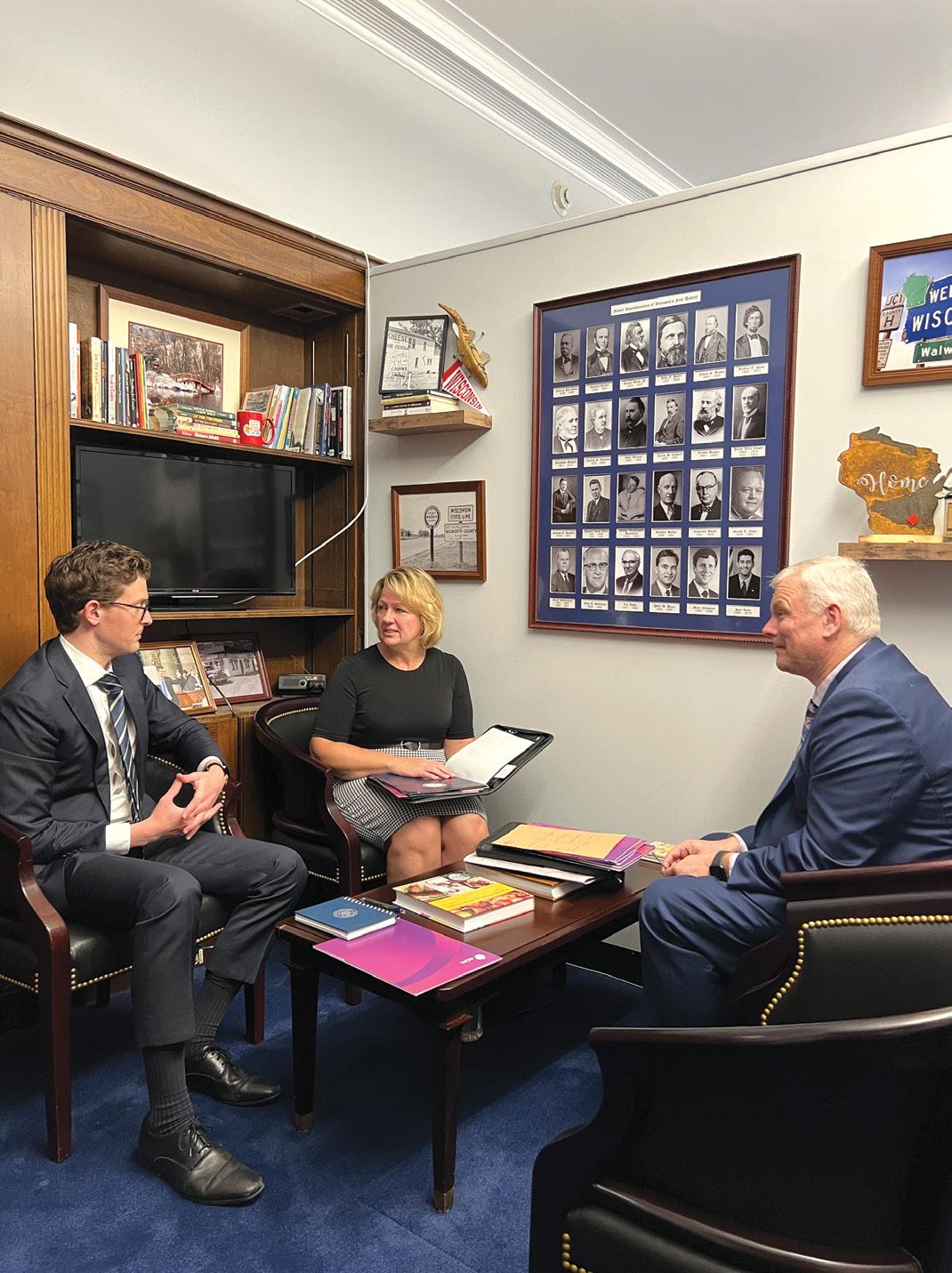
Audited financial statements approved

for fiscal year ended April 30, 2023
The Finance Committee of the WICPA Board has reviewed and approved the WICPA audited financial statements for the fiscal year ended April 30, 2023.
The WICPA Educational Foundation Board has reviewed and approved the audited WICPA Educational Foundation financial statements for the fiscal year ended April 30, 2023.
Members may request a copy of the audited financial statements by contacting WICPA President & CEO Tammy Hofstede at 262-785-0445 ext. 4518 or tammy@wicpa.org.
5 On Balance September | October 2023 wicpa.org
Tammy J. Hofstede is president & CEO of the WICPA. Contact her at 262-785-0445, ext. 4518, or tammy@wicpa.org.
Hofstede and Keller discuss issues with Congressman Bryan Steil’s Deputy Chief of Staff, David Goldfarb.
The Ultimate Team Player
 Paul Baniel, CPA, CGMA
By Ken Wysocky
Paul Baniel, CPA, CGMA
By Ken Wysocky
As a youngster who loved the Milwaukee Brewers and the Green Bay Packers, the odds of Paul Baniel growing up and becoming an executive for either of those organizations — much less both — were about as improbable as a Hail Mary pass completed for a touchdown with time expiring in the Super Bowl … or hitting a game-winning, grand slam homer with two outs in the bottom of the ninth in game seven of the World Series.
Yet here Baniel is, preparing to retire this October from his position as vice president of finance and administration for the Packers, a post he’s held since summer 2009. He also served as an executive for the Brewers from 1990 to 2002 and as chief financial officer (CFO) for Potawatomi Hotel and Casino after that.

“I’ve definitely had a dream career path for an accountant working in Wisconsin,” said Baniel, 61. “I’m really grateful for the opportunities I’ve had to work with the Brewers and the Packers, as well as for the Potawatomi Hotel and Casino. It’s been quite a ride.”
Baniel would be the first to concede that he’s certainly been fortunate to have worked in upper management for two such iconic and storied Wisconsin professional sports organizations.
“When you tell people that you work for the Packers or the Brewers — and the casino, too, for that matter — they say, ‘Oh, really?’” Baniel said. “They’re perceived as fun places to work. And they are.”
But it was a strong work ethic, not luck, that thrust him into such rarefied career air, coupled with a fortuitous business connection through his father, the late Ed Baniel.
7 On Balance September | October 2023
Photography by John Sibilski
“
I’ve definitely had a dream career path for an accountant working in Wisconsin.
worker, Baniel said.
“We’d see his car come around the corner as he came home from the dealership for dinner, and by seven o’clock he was off to work at the hardware store, where he worked three nights a week,” he explains. “My grandma minded the store during the days.
“Mom and Dad were Depression-era kids who worked really hard,” he continued. “I bet my mom did three loads of laundry a day. There’s no question their work ethic made an impression on me.”
Baniel’s father nudged him toward a career in accounting during his sophomore year in high school. Baniel had taken an accounting class and found crunching numbers came very naturally, he recalled.
“My dad took me aside one night and pointed out that accounting might be a really good career for me,” he said. “He saw some ability in me there and encouraged me to pursue it. And it ended up being a terrific career.”


On Balance September | October 2023 8 wicpa.org
Baniel was the keynote speaker at the 2023 WICPA New CPA Banquet.
“
My dad took me aside one night and pointed out that accounting might be a really good career for me. He saw some ability in me there and encouraged me to pursue it. And it ended up being a terrific career.
Climbing the career ladder
After graduating from Hamilton High School in 1979, Baniel earned an accounting degree at the University of Wisconsin–Milwaukee, graduating in 1983. He was the first child in his family to attend college, he said.
While in high school and college, he worked part time for his father at the dealership, doing accounting work. During that time, he got to know Bud Selig, then the owner of the Brewers.
After graduating from college, Baniel worked for about three and a half years in public accounting in the audit group at Price Waterhouse (now PwC). After his father died of cancer in 1986, Baniel left Price Waterhouse and took over as CFO of the dealership. At the same time, he also worked part time for the Brewers, he said.
Eventually Selig sold the dealership and then hired Baniel as a full-time employee in 1990. For the next 12 years, he served as the team’s assistant controller, controller and vice president of finance for the Brewers. That job proved to be a launching pad for his next job: CFO at Potawatomi, a position he held until 2009, when he joined the Packers.

Ironically, one of baseball’s darker episodes — the players’ strike that started in August 1994 and extended into April 1995 — helped Baniel get the job with the Packers. In 2009, National Football League (NFL) players and team owners were headed for labor strife, and Packers President Mark Murphy liked that Baniel had navigated a labor action, he said.
“It was one of those surprising cases where a negative ended up being a positive,” Baniel said, noting that a looming players’ lock-out finally occurred in 2011. “I’m sure that having pro sports experience on my résumé was a big selling point, too, and listing Bud Selig as a reference didn’t hurt, either.”
A green-and-gold dream come true
Working for the Packers was the ultimate dream job for Baniel, a die-hard Packers fan. He said his father attended the legendary Ice Bowl with an uncle who owned season tickets. The NFL title game was on Dec. 31, 1967, at Lambeau Field, where the Packers beat the Dallas Cowboys, 21–17, with a wind-chill index hovering around -46 degrees.
“All I remember is that my mom and aunt kept asking me to stop standing in front of the television,” he said.
9 On Balance September | October 2023 wicpa.org
He retired in September after 14 years as VP of finance and administration for the Green Bay Packers.
“
Working for the Packers was the ultimate dream job for Baniel, a die-hard Packers fan.
Baniel’s job, which essentially involves leading the team’s day-to-day financial operations, came with several built-in perks: Unlike baseball, the NFL had already established a salary-cap system that helped ensure competitive balance league-wide. And roughly 70% of the league’s shared revenue is split equally among all the teams, which also enhances parity. Furthermore, the Packers’ strong brand and tremendous fan support usually lift the team into the first or second quartile (of 32 teams) in terms of revenue generation, he pointed out.
“I certainly loved my time with the Brewers,” Baniel said. “But I once joked among a bunch of small-market baseball CFOs that when we all died and went to heaven, we’d become NFL CFOs,” he said. “So when I got hired, I thought to myself, ‘Shoot — I’m in heaven!’”
Things got even better in February 2011 when the Packers won the Super Bowl in Baniel’s second year with the team, which earned him a coveted Super Bowl ring.
Moreover, even after 14 years, the thrill of working at Lambeau Field never gets old, he said.
“Every day I drive up to the stadium and still feel a little tingle,” Baniel noted. “It’s pretty neat.”
Keys to success
Baniel says his years in public accounting were instrumental to his success.
“In an audit group, you get to see the whole organization from the top down and from a financial perspective,” he explained. “I think I’ve always been a pretty strategic thinker and good at anticipating what comes next after making decisions.
“So I pretty quickly was able to leverage my accounting and auditing experience into management roles,” Baniel added. “I love the strategic aspects of it, how all departments work to make organizations successful. You get to see how all the different sections of the orchestra play together to create a great symphony.”
Great bosses and mentors also played a role, Baniel said, noting that all the executives he reported to helped inform his management style: Hire great people, and then get out of their way and let them do their jobs without micromanaging.
“My dad also was pretty poised and calm, a trustworthy man with a lot of integrity,” Baniel added. “And all the people I’ve worked for had the same attributes.”
Fond memories
As Baniel looks back, he said he’s just grateful to have worked for such great organizations and for the opportunity to help each one progress.
He is especially proud of many achievements with the Packers, from a significant expansion of seating at

Lambeau Field and the addition of modern amenities to the development of the Titletown complex of shops, restaurants and activities located next to the stadium. But the thing he’s enjoyed most is seeing streams of smiling fans enter Lambeau Field over the years.
“We’re in the entertainment business,” he explained. “Our job is to give the fans a great experience and send them home happy. And when fans come here, they’re happy — and that’s the best thing of all.”
Baniel officially steps down Oct. 1, and he said he’s ready for the next stage of his life. He plans to do some traveling with his wife, Nancy, and spend time with a new grandchild — their first. The couple has four children.
“Hopefully there’ll be a few more grandchildren, too,” he said. “I’m definitely looking forward to enjoying all of it.”
On Balance September | October 2023 10 wicpa.org
Ken Wysocky is a freelance writer based in Whitefish Bay. Contact him at 414-962-6202 or kenwysocky@gmail.com.
Baniel looked forward to his job with the Packers every day as he drove to work.




11 On Balance September | October 2023 wicpa.org CPA PROFESSIONAL LIABILITY INSURANCE AND RISK MANAGEMENT SOLUTIONS Created by CPAs, for CPAs, CAMICO’s guiding principle since 1986 has been to protect our policyholders through thick and thin. We are the program of choice for more than 8,000 accounting firms nationwide. Why? Does your insurance program go the extra mile? Visit www.camico.com to learn more. WE WALK
TALK. CAMICO knows CPAs, because we are CPAs. CAMICO’s Professional Liability Insurance policy addresses the scope of services that CPAs provide. Includes unlimited, no-cost access to specialists and risk management resources to help address the concerns and issues that you face as a CPA. Provides potential claim counseling and expert claim assistance from internal specialists who will help you navigate the situation with tact, knowledge and expertise. Harris Hauptman Senior Account Executive T: 800.652.1772 Ext. 6727 E: hhauptman@camico.com W: www.camico.com Accountants Professional Liability Insurance may be underwritten by CAMICO Mutual Insurance Company or through CAMICO Insurance Services by one or more insurance company subsidiaries of W. R. Berkley Corporation. Not all products and services are available in every jurisdiction, and the precise coverage afforded by any insurer is subject to the actual terms and conditions of the policies as issued. ©CAMICO Services, Inc., dba CAMICO Insurance Services. All Rights Reserved.
THE
Alternative Practice Structures and Opportunities What CPAs Need to Know
By Dr. Sean Stein
With the CPA profession facing a litany of challenges, there is another trend that practitioners, firm owners and aspiring entrepreneurs should monitor going forward: the continued proliferation of alternative practice structures.
The shift and growth of alternative practice ownership structures and business combinations is being driven by a few fundamental forces that all accounting professionals are well aware of. Increasing automation, the more recent integration of artificial intelligence through business practices, demands for environmental, social and governance (ESG) reporting, and the expectation for real-time reporting are just a few of these challenges. Compounding these issues are the multiple issues related to the accounting pipeline, which is a challenge that has been documented in multiple publications1 and surveys.2
With all of the changes facing the profession and the business community at large, there are options and considerations CPAs should take into account when thinking of establishing and/or entering into a nontraditional firm structure.
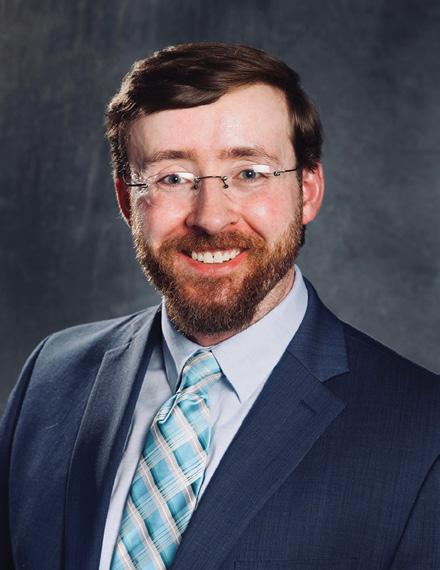

Legal considerations
One of the first items that needs to be part of this planning process is a review of the legal limits related to providing CPA services. Some states, for example, require a CPA owner to provide certain services, but this is a challenge that can be mitigated by segregating service lines into separate legal entities. A common practice is to segregate all attest and attest-related services into one single entity. With expectations
for attest-like services, such as proof-of-reserves (for crypto) and ESG-related attest work, set to increase in occurrence, this might be a commonsense first step for firm owners to consider.
Once legal issues have been ironed out, there are other specific areas that can be separated and developed as profitable niche areas for entrepreneurs seeking alternative business structures.
Building out new service lines
A clear goal of many entrepreneurs seeking to embrace alternative ownership structures is to expand opportunities for revenue creation, and partnering with non-CPA firms provides a readily understandable road map to accomplishing this goal. This is especially true as the sheer scope of data collected, reported and expected by the marketplace continues to increase and take the form of nonfinancial and nonquantitative information. In addition to the increasing demand for more consistent and real-time reporting, the lack of authoritative accounting and auditing standards in the space also opens the door for new revenue lines. Examples of these lines that are best able to be managed and grown through a nonalternative (not necessarily requiring CPA owners) include but are not limited to the following:
ESG reporting and practices
No matter which way the political winds blow, the reality is that ESG issues and concepts and the ramifications of these trends are going to be felt within the accounting and business landscape for the foreseeable future. While the topics and general themes connected to the ESG space have been debated and seem well understood, the challenge remains how best to translate these insights into actionable business intelligence. CPAs certainly have the skills to quantify, analyze and report various types of information, but they will most likely need to collaborate with non-CPA professionals.
On Balance September | October 2023 12 wicpa.org
1 NASBA, “The More Things Change the More They Stay the Same: Addressing the CPA Pipeline Crisis,” https://nasba.org/blog/2023/03/14/addressing-the-cpa-pipeline-crisis/ 2 CPA Practice Advisor, “AICPA Says It Has a Plan to Fix the CPA Talent Shortage,” May 18, 2023. https://www.cpapracticeadvisor.com/2023/05/18/aicpa-says-it-has-a-plan-to-fix/79813/
Smith, DBA, CPA, CMA, CGMA, CFE
Cybersecurity
Cybersecurity and other cyber considerations might not strike practitioners as a particularly new or high-growth space, but this misses several important considerations. COVID-19 might have turbocharged the work-from-home movement, but evidence suggests that this trend is not going anywhere anytime soon. With almost 90%3 of data breaches caused by human error, according to recent research conducted by security firm Tessian and researchers from Stanford University,4 employers of all kinds are going to be looking to improve and update cyber policies moving forward. Employers might not realize it, but some of the hires and entrants to the firm might be a leading cause of data security and cyber issues. At the same time (but on a parallel track), the affinity that
Gen Z has for social media5 — including posting “a day in the life” of professional workplaces — has the potential to lead to client retention and even legal issues for professional firms. This is not to disparage this newest cohort in any way but to simply point out a way that advisors can help clients better understand these newest employees.

Advising clients on how to best train, retain and develop new employee talent might not fall under the guise of a traditional accounting firm, but that is exactly why it presents a readily available opportunity. The norms of the workplace have changed and will continue to change for the foreseeable future as diversity (cultural, intellectual and interpersonal), connectivity and preference for remote work create trends that will dominate employee training for years to come.
https://blog.knowbe4.com/88-percent-of-data-breaches-are-caused-by-human-error#/
https://telefonicatech.com/en/blog/mobile-malware-part-of-the-generation-z
13 On Balance September | October 2023 wicpa.org
3 Stu Sjouwerman, “Stanford Research: 88% of Data Breaches Are Caused By Human Error,” KnowBe4, March 4, 2023.
4 Tessian, “Psychology of Human Error,” 2022. https://www.tessian.com/research/the-psychology-of-human-error/
5 Telefonica Tech, “Mobile Malware, Part of the Generation Z,” April 22, 2021.
Connecting the dots might seem like a stretch, but when viewed as the following, this is not as radical as it might seem. Survey after survey points to the challenges employers across industry lines are facing with attracting, retaining and developing new talent. Establishing a service line to assist clients with this very real and present business need is a way to not only service these clients but also to cement the firm’s image as a true strategic advisor.
Private equity
No conversation around alternative practice structures can ignore the role that outside capital — commonly in the form of private equity (PE) funding — has on the process. Examples abound of accounting firms of all sizes seeking and receiving PE money, and this money certainly has conditions attached when received. Some of the pitfalls that can befall firms seeking to restructure and pivot using PE capital include the following:
1) profit expectations of the PE partner,
2) the set timeline to achieve profitability metrics, and
3) the reality that some of this capital may be accompanied by debt the firm will have to manage.
These are real issues that should be thoroughly assessed by the management team, but these possible obstacles can often overlook the two fundamental realities shaping the profession.

First, the average age of a CPA firm owner is in the middle of a dramatic transition;6 and as a result, retirement, mergers and straight-up sales are going to become more rather than less common in the coming years. While firms might be profitable, have an established customer base and seemingly be operating quite well now, how much of the current revenue/profit is replicable? Bringing in a fresh perspective on the service lines, practice and customer base serviced by the firm might be a great opportunity for the firm to better position itself for the future.
Second and arguably more important is the reality that while the accounting pipeline remains an issue in search of a comprehensive solution, the current pool of accounting graduates is not looking to duplicate the business practices of the past. Rather, and reflective of wider labor market changes in a wide range of industries, the next generation of practitioners want to put their own mark on the profession. To make firms an appealing place to work for the long term — or even to make them marketable to be sold — branching out into new service lines simply makes sense. Limiting the perception of an accounting career to one that only revolves around tax and audit is a disservice to the profession, limits opportunities to attract and retain
new talent, and reduces the financial opportunities of the firms involved.
Alternative practice structures and business models are growing for a reason — they provide real-world, actionable ideas for practitioners seeking to make the profession stronger and more successful moving forward.
On Balance September | October 2023 14 wicpa.org
Dr. Sean Stein Smith, DBA, CPA, CMA, CGMA, CFE, is associate professor of accounting, economics and business at Lehman College in Bronx, New York; a strategic advisor to the Central Bank Digital Currency Think Tank; and founder of the Institute for Blockchain and Cryptoasset Research. Contact him at drseansteinsmith@gmail.com.
“
6
Council, “Accounting Crisis—CPA Firms Face 75% Retirements,” April 14, 2022.
Alternative practice structures and business models are growing for a reason — they provide real-world, actionable ideas for practitioners seeking to make the profession stronger and more successful moving forward.
Controllers
https://controllerscouncil.org/accounting-crisis-cpa-firms-face-75-retirements/
YOUR TRUSTED TAX SOLUTION







The Tax Section of von Briesen & Roper, s.c. is your resource for tax situations ranging from the traditional to the most complex including: State and Federal Voluntary Disclosures, FBAR/Foreign Assets Disclosures, Property Tax Exemption Requests, Employee Classification Issues, State Tax Nexus Studies and Tax Planning. Our knowledge and experience have positioned us to be your trusted solution on unique tax matters. The bottom line? We get results.
To learn more about our Tax Section, please contact Daniel Welytok at daniel.welytok@vonbriesen.com.


vonbriesen.com/tax Milwaukee • Madison • Neenah • Waukesha • Green Bay
•Chicago • Eau Claire
Integrating ESG Into Your Business Strategy

ESG stands for environmental, social, and governance and is often used interchangeably with sustainability, corporate responsibility (CR), corporate social responsibility (CSR) and triple bottom line.
Fundamentally, sustainable business practices consider the future effects of business policies and activities. These practices are related to various risks, from climate change to employee health and safety to fraud and corruption. Although ESG concepts have been part of business discussions for many years, the effects of climate change and the COVID-19 pandemic have accelerated the ESG imperative and the need for organizations to adopt an ESG strategy. We will consider in this article some of the reasons to consider integrating ESG into your business strategy as well as briefly cover some of the pitfalls.
By Timothy P. Hedley, PhD, CPA, CFF, CFE

“Five Ways That ESG Creates Value,” McKinsey & Co. found that “paying attention to environmental, social and governance (ESG) concerns do not compromise returns — rather, the opposite.” After reviewing more than 2,000 studies on the effect of ESG on equity returns, McKinsey concluded that 63% had positive results and only 8% had negative consequences.
Long-term value creation
ESG focuses on developing a long-term strategy that aligns with long-term financial returns. In a recent report entitled
Further, organizations increase long-term value by taking advantage of lower energy consumption and efficient resource-use cost reductions. For example, in its 2022 Global Impact Report, 3M announced that its Pollution Prevention Pays program saved more than $2.34 billion since the program’s inception in 1975.
The Harvard Business Review (September-October 2020) found that sustainable business practices can help
On Balance September | October 2023 16 wicpa.org
“
Fundamentally, sustainable business practices consider the future effects of business policies and activities.
organizations gain better access to resources due to better government and community relations, which could lead to more growth opportunities.
Risk mitigation, opportunities for growth and competitive advantage
ESG factors can have material impacts on companies and have caused significant declines in valuation. Some headline events that have direct relevance to ESG include the Enron accounting scandal (governance); VW’s emission scandal, which was a fraud driven by cultural and ethical lapses (governance); and BP’s Deepwater Horizon rig explosion (environmental), which cost the company more than $65 billion in damages and losses.
The National Council on Occupational Safety and Health placed Amazon on its “Dirty Dozen” list of the most dangerous employers in the country (social). Specifically, Amazon made the list for such workplace issues as employees left without resources or income after on-the-job injuries, workplace fatalities and suicide attempts. Amazon’s ongoing workplace concerns are a continuing source of bad publicity and reputational damage.
Companies face numerous ESG risks related to climate change; the duty of care; working and safety conditions; respect for human rights; corruption practices; compliance with laws, regulations, and policies; litigation risks; reputational risks; and increased competition among other risks.
In a study by Loyola Marymount University, in all 12 industries examined, the group of ESG-listed companies showed lower stock return volatility than the reference companies — on average, by 28.67%. Understanding your ESG-risk profile and addressing the material issues can help maintain valuations, save your reputation and decrease market volatility. It is plain that companies that fail to invest in ESG risk significant monetary losses as well as losing customers and talent to competitors who have invested in ESG issues.

Stakeholders care
PwC’s “2021 Consumer Intelligence Series Survey on ESG” found that 83% of consumers think companies should be actively shaping ESG best practices and that 76% of consumers said they would discontinue relations with companies that treat employees, communities and the environment poorly.
PwC also found that 57% of consumers say that companies should do more to advance environmental issues. In comparison, 48% want companies to show more progress on social issues, and 54% expect more attention to governance issues. The PwC finding suggests that consumers and employees want to be associated with brands that have a positive impact on the world.
Changes in demand for sustainability information
Stakeholders (those with a direct or indirect interest in an organization) require transparent and accurate sustainability reporting. The needs of these stakeholders can vary. For example, stakeholders may be concerned with reducing pollution and greenhouse gases, fair wages, workplace equality, diversity and inclusion, affordability and access to products, and responsible citizenship.
Investors, in particular, expect an organization to disclose its sustainability performance. In an EY “Climate Change and Sustainability Services (CCaSS) Institutional Investor Survey,” 98% of institutional investors use ESG factors when considering investment decisions. The same survey found that from 2018
17 On Balance September | October 2023 wicpa.org
“
ESG factors can have material impacts on companies and have caused significant declines in valuation.
to 2020, the percentage of investors conducting a structured evaluation of nonfinancial disclosures rose from 32% to 73%.
Globally, governments are making climate-risk reporting mandatory. As the climate crisis worsens, increased legislation requiring more rigorous nonfinancial reporting is the response worldwide. For example, Thai law requires information on ESG practices to be included in annual reports, and Hong Kong’s climate reporting plan is set to begin in 2025.
The European Council last summer announced that the new corporate sustainability reporting directive amends the 2014 nonfinancial reporting directive. It introduces more detailed reporting requirements and ensures that large companies are required to report on sustainability issues such as environmental rights, social rights, human rights and governance factors.
Last May, the Securities and Exchange Commission proposed amendments to rules and reporting forms to “include certain climate-related disclosures in their registration statements and periodic reports, including information about climate-related risks that are reasonably likely to have a material impact on their business, results of operations, or financial condition, and certain climate-related financial statement metrics.”
Take ownership of your organization’s ESG story
With the growth of third-party ESG data aggregators and scorers, your ESG story will be told. Each ESG data provider has developed a methodology to compile scores and aggregate and weigh ESG factors. It is best to get in front of this and tell your own story because the scorers tell it for you.

There are some caveats. For instance, be careful of simply supplying boilerplate information. Boilerplate can be vague and abstract and lead scorers to the wrong conclusions. Depending on the nature of your internal systems, there may be a lack of reliable ESG-related information, but the problem may not be as big as it first appears. Seventy-four percent of Sustainability Accounting Standards Board (SASB) topics are currently addressed in SEC filings.
Greenwashing is also a problem that may leave your ESG efforts for naught. Greenwashing is when an organization spends more resources marketing itself as environmentally friendly than it does to minimize its environmental impact. Greenwashing is a dishonest marketing tactic; and too often, stakeholders can see past the hype.
Finally, there is the joint problem of lack of consistency and objectivity. Recently sustainability reporting standards, frameworks and initiatives have boomed; however, they have done little to promote consistent and comparable decisionuseful ESG information. The governance and control over ESG-relevant data are often poor, as is the nature of thirdparty assurance. This can lead to selective reporting that can easily slip into greenwashing.
The bottom line
The ESG train has left the station. Addressing the salient ESG risks your organization faces and reporting on your progress to address those can provide significant opportunities for growth and business resilience. These opportunities may include resource efficiency, cost reduction, innovation, the ability to capitalize on shifting consumer and investor demands and even reduced government scrutiny.
Timothy P. Hedley, PhD, CPA, CFF, CFE is an executive-in-residence at the Gabelli School of Business at Fordham University, responsible for the ESG literacy programs and initiatives, and an adjunct accounting faculty member. He is chair of the Connecticut Society of CPAs and founding chair of its ESG Committee. Tim is also a board member of the Center for Professional Accounting Practices. He is a retired partner from a Big Four accounting firm, where he served as the global lead partner for fraud risk management services.
On Balance September | October 2023 18 wicpa.org
This article originally appeared in Connecticut CPA magazine and is reprinted with permission from the Connecticut Society of CPAs (CTCPA).
“
Addressing the salient ESG risks your organization faces and reporting on your progress to address those can provide significant opportunities for growth and business resilience.
Amy K. Adams
RSM US LLP
John J. Adleman III
WB Manufacturing LLC
Mitchell Anderson
FIS
Bonnie J. Austin
Rebecca Bains Forward Community Investments
Molly E. Baker
Samantha J. Ballweg
Shawn R. Bauer
Bauman Associates Ltd.
Michael J. Beam
Jay R. Beckman
Baker Tilly
Nicholas Benkert University of Wisconsin–
Milwaukee
Vanessa C. Bennett
William Boehm
Middleton High School
Katelyn C. Boyd
Erika M. Braun
WOW Logistics
Cora S. Brice
PwC
Ty R. Brisky
RSM US LLP
Eric L. Brown
PwC
Jessica Brown
Peoples State Bank
Kailan B. Brown University of Wisconsin–Milwaukee
Cory J. Brunn
Moss Adams
Mary A. Burke
Nathan T. Carlson Wipfli LLP
Jenna S. Carr
Deloitte & Touche LLP
Michael J. Carroll
Ernst & Young LLP
Luis Castellanos
Anthony Cervini
Sikich LLP
Angela G. Chieffo
Kelbe Bros. Equipment Co. Inc.
Inseong Choi
CliftonLarsonAllen LLP (CLA)
Margaret E. Clanfield State of Wisconsin Investment Board
Rebecca Dalton
Alexander J. David RSM US LLP
Peter L. Davis
Ernst & Young LLP
Julie Dawson
Carthage College
Troy T. De Bruin Baker Tilly
Bailey C. DeRudder
Nisha Desai University of Wisconsin–Madison
Danielle N. Diefenbach First Business Bank
Robert G. Donarski Direct Supply
Mark O. Dubey
Gabriella Elliott Janesville School District
Cole H. Eron Baker Tilly
Emily R. Ewert
Andrew Fischer University of Wisconsin–Milwaukee
Jeffrey J. Fischer Lincoln Industries of Wisconsin
Katelyn Fladten
Constellation New Energy
Sarah E. Fleming University of Wisconsin–Milwaukee
Mitchell B. Fornell Bauman Associates Ltd.
Matthew G. Fox
William G. Foy
Kollath CPA
Michael W. Frank
Frank Advisory Services
Nancy Fumo CLA
Amanda M. Gethers
Oldcastle Building Envelope
Kassandra C. Gillis
BDO USA LLP
Jason Glisczynski
Melissa Gramza
Waukesha State Bank
Craig J. Gretzinger
PwC
Ashley C. Hall
University of Wisconsin–
Madison
Claire Halverson Johnson Block & Co. Inc.
Nancy A. Hangartner
Catalyst Consulting Group LLC

Meghan E. Hayes
Marquette University
Elizabeth M. Heider
Thomas D. Hereley
Chortek LLP
Teagan M. Hipp Hexagon LLC
Mark W. Hofacker
U.S. Venture
Nathan Jacob
Janesville School District
Jordan O. Jagodinsky
Georgia-Pacific Corp.
Sara N. Jochims
University of Wisconsin–Milwaukee
Kallista Johanson University of Wisconsin–Stevens Point
Kelsey R. Jones
Ernst & Young LLP
Kyle M. Kaiser
Colin Kammerzelt RSM US LLP
Eric J. Kassebaum
UW Credit Union
Marcus D. Katka
University of Wisconsin–La Crosse
Alyssa A. Kauth
Ernst & Young LLP
Emelia Keller
Crystal L. Kirchner CMD Corp.
Megan N. Klackner Wipfli LLP
Lee T. Kleszczynski
Greenfield High School
Hailey M. Klink Wipfli LLP
Treena Knowles
Johnson Block & Co. Inc.
Agata Kosek
Weaver and Tidwell LLP
Julia Koster
Access Community Health Center
Kylie Krajenka
Port Washington High School
Caleb J. Krueger
SVA Certified Public Accountants S.C.
Autumn Kuehn
Marquette University
Isabel A. Kumar
Patrick A. Lang
Baker Tilly
Alexus A. Larsen
PwC
Matthew M. Lechner
PwC
Maxwell H. Lehner
CLA
Jared D. Lensmeyer
Hawkins Ash CPAs LLP
Mandy A. Leonard
Luke Lessila
St. Norbert College
Tanya M. Marcoe
ADVOCAP
Sheila A. Meddaugh
Wysocki Family of Companies
Dane Metzger
Port Washington High School
Caleb R. Mielke
Peter Miller
Johnson Financial Group
Susan J. Moll
KerberRose S.C.
Diana Morales
Herzing University
Annette K. Moy
Reilly, Penner & Benton LLP
Ardi Muqaj
Associated Bank
Barbara A. Namowicz
Penfield Children’s Center
Alexandra P. Nelson
Plexus Corp.
Daniel B. Nelson
Hagen CPA LLC
Luke T. Olson
Robert C. Roth CPA S.C.
Andrea L. Owenby
Wegner CPAs
Ela Pagenkopf
New Horizons Supply
Cooperative
Melanie Perez
Renee R. Peters
Rocco V. Pintozzi
University of Wisconsin–
Milwaukee
Brad Porter
Lauterbach & Amen LLP
Alyssa Prodoehl CLA
Emma Radtke
University of Wisconsin–Whitewater
Conner Reisdorf
Mikayla L. Richards
RSM US LLP
Mary Rohrer
Mary E. Rugotska
Rugotska & Rugotska CPAs LLC
Emily J. Sannes CLA
Malick Sarr
SSM Health Wisconsin/Dean Medical Group
Sarah Sarsour
University of Wisconsin–Milwaukee
Anna D. Schuh
Kimberly Clark
Andrew J. Schulner
Nohre & Co. S.C.
David M. Schumerth
Fox Valley Tool & Die Inc.
Sarah Sebastian Johnson Block & Co. Inc.
Brian Sergenian MLG Capital
Zachary T. Shortess
Deloitte & Touche LLP
Hunter Smith MGIC Investment Corp.
Collin J. Sorenson
Garrett L. Spellman
Emma R. Steinbrecker
U.S. Venture
Grant C. Stellmacher
RSM US LLP
Nathan A. Storch
Huberty
Gary L. Storm
Lauren N. Stuber
Deloitte & Touche LLP
Emily Van De Hey
University of Wisconsin–La Crosse
Taylor Van Dyke
Huberty
Cory Verhaalen
U.S. Bank Wealth Management
Ryley J. Watzka
Hawkins Ash CPAs LLP
Anna L. Wendland
Madison Gas & Electric Co.
Bryce E. Wick CLA
Samantha Wilson
Reis & Reis CPAs Ltd.
Ian M. Wirtz KPMG LLP
19 On Balance September | October 2023 wicpa.org
Welcome new members! Get to know the newest members of the WICPA. April 1, 2023 – July 31, 2023
Managing the Data Risk and Security Implications of Outsourced Technology
 By Chris Semrow, CPA,
By Chris Semrow, CPA,
IT controls have become an integral part of any organization. With the advances in technology over the last several decades, it has become crucial for organizations to understand the risks associated with existing and new technologies and to address them with appropriate controls. But where to start? How do you ensure you have effective controls or enough controls for all this technology?
While discussing all the aspects of IT controls would fill volumes, one of the more impactful areas of IT controls that organizations encounter relates to the use of outsourced third-party applications, systems and infrastructure providers.
Outsourcing or using vendor-supported applications, systems and infrastructure can be excellent ways for an organization to manage the journey of obtaining the latest and greatest technology to run the business. However, while there are many advantages to using third parties for these types of services, there are also certain responsibilities and risks that the organization must address in order to successfully deploy this strategy.
As a function, IT controls include controls over the IT environment, network operations, access and authentication to programs and data, program development and change management. These areas take on a different “flavor” when organizations introduce the concept of outsourcing to them. An organization will enter into agreements with third parties to handle these areas — however, once they are in place, it’s not “out of sight, out of mind.”
The organization needs to take into consideration the risks that still remain from these outsourced IT controls areas and assess how those risks are addressed. Many times, an organization will rely on attestations from third parties for the outsourced area(s) in the form of a system and organization controls (SOC) report.
These reports come in several different flavors and are meant to attest to the controls of the outsourced provider. When it comes to IT controls, the most relevant SOC report is the SOC 2 report, which is a framework that ensures a third-party service provider stores and processes client data in a secure manner. The focus of the SOC 2 report is availability, security, processing integrity, confidentiality and privacy.
Obtaining the SOC 2 report from your third-party provider is a good first step for an organization, but it is just the start. Once the report is obtained, the organization
On Balance September | October 2023 20 wicpa.org
CISA
“
With the advances in technology over the last several decades, it has become crucial for organizations to understand the risks associated with existing and new technologies and to address them with appropriate controls.
should review the report and understand what type of SOC 2 report it is. The two types of reports are SOC 2 Type 1 and SOC 2 Type 2.
A Type 1 report assesses the design of the controls at a specific point in time. A Type 2 report, on the other hand, assesses how effective the controls are over time through testing them over a period of time (for example, six, nine or even 12 months). The SOC 2 Type 2 report will carry more weight because it attests to the effectiveness of the controls over time.
Once an organization understands and reviews the SOC 2 report, it is important to identify and review what controls, if any, resulted in exceptions on the report. Careful analysis should be undertaken to ensure that any of these controls (and their potential weaknesses) are addressed by the organization through compensating or mitigating controls of their own.
Once addressed, there is an additional area to focus on in the SOC 2 report. It’s called the Complementary User Entity Controls (CUEC) section. It is in this section that

21 On Balance September | October 2023 wicpa.org
the third-party provider identifies the controls the consuming organization should have in place or is responsible for in order to properly use the third party’s services. The service provider establishes the areas that fall into this section of the report. The listing can be small, or it can be a “laundry list” of different areas and responsibilities. It then becomes an exercise for the organization using the service to research and analyze its own controls and ensure that those responsibilities listed in the CUEC section are covered.
CUEC sections will vary from SOC report to SOC report. Some of the more common items that are identified in the CUEC section are:
• logical access (provisioning and deprovisioning of users as well as access reviews) to the outsourced application or system, and
• data transmission procedures (including an appropriate method of protecting data during transmission).
By documenting how the CUECs are addressed, the organization will establish a reference for future reporting, making sure to include who is responsible for the control, the
frequency of the control and the similarity or correlation to existing control(s). Then, periodically, the organization needs to re-evaluate and reassess the CUECs, as they may change after the initial review.
CUECs are the organization’s reminder that third-party risk management involves shared responsibilities between the organization and the suppliers or vendors it utilizes. The suppliers or vendors may be responsible for defining the control objectives, but it’s the organization that must effectively implement and address the CUECs.
As organizations embrace the opportunity to make efficiencies in utilizing outsourcing as a critical part of the business, it also becomes imperative for them to ensure there is a process in place to review SOC reports at least annually and ensure that any CUECs are identified, tracked and implemented.

On Balance September | October 2023 22 wicpa.org
Wisconsin Institute of Certified Public Accountants CPA APPRECIAT ION MONTH NOVEMBER 2023 CELE B RATE
To help raise awareness of the accounting profession, we’re looking for volunteers to go into high schools to talk about accounting as a career.
To learn more, visit wicpa.org/CPAmonth
Chris Semrow, CPA, CISA, is senior manager of cyber compliance and assessments for BDO USA LLP in Madison. Contact him at 608-836-7500 or CSemrow@BDO.com.




23 On Balance September | October 2023 wicpa.org Do you trust your insurance carrier? Well, you’d better. Insurance coverage is really just a promise. A promise to be there when things go bad. Find out more about the Silver Lining and a special discount on home and auto insurance just for members of the Wisconsin Institute of CPAs. To find an agency near you, visit thesilverlining.com. Trust. The worst brings out our best.®
memorials


William G. (Bill) DeWitt, CPA (1937–2023)
Bill DeWitt, CPA, passed away on Saturday, June 26. He was 86. DeWitt earned a BA in economics from Lawrence University in Appleton and then entered the U.S. Navy, for which he served as a supply corps officer. He then attended the University of Wisconsin–Madison, where he received an MBA in accounting. He received the Elijah Watts Sells award for his performance on the CPA Exam. DeWitt’s career included a decade in public accounting with Arthur Andersen & Co. in Rochester, New York, followed by a 1976 move to Erie, Pennsylvania, with Hammermill Paper Co., eventually advancing to corporate controller. Following that, he served for six years as controller/treasurer of Gannon University in Erie. As a citizen of Erie, he volunteered with Friends of Asbury Woods Nature Center and served on the board of directors of Sarah A. Reed Children’s Center. DeWitt was an elder at Wayside Presbyterian Church and served on several boards there. He also had served as treasurer of the Presbytery of Lake Erie. For a decade he was on the board of directors of Erie Homes for Children and Adults and served on many committees there. He also enjoyed membership in the Presque Isle Rotary Club and the YMCA Men’s and Women’s Club. DeWitt is survived by his wife of 56 years, Sally; two children and one grandson.
Kenneth Arthur Melin, CPA (1938–2023)
Kenneth (Ken) Arthur Melin, 85, of Wisconsin and North Carolina, passed away Wednesday, July 12. He was a native of Withee and moved to Waukesha after graduating from the University of Wisconsin–Madison. He worked as a CPA throughout his professional career. In 1996, he was promoted from controller to vice president of finance for Innovative Control Systems Inc. (which has since been renamed or shuttered). He retired in 2006 as controller for Krier Foods Inc. in Random Lake. Melin served in the Army and was part of the 433rd Army Band located in Fort Irwin, California, during 1962–63. He and his wife, Dolores, moved to Huntersville, North Carolina, in 2011 to be closer to their sons and grandchildren following retirement. He was preceded in death by his parents; his wife of 46 years, Dolores (nee Warner); and his oldest son. Melin is survived by his brother, his youngest son and four grandchildren.
Herbert C. Puetzer, CPA (1923–2023)
Herbert C. Puetzer, CPA, age 100, passed away on Monday, June 26. Puetzer’s family made their home in West Allis, where he attended Holy Assumption Grade School and then Marquette University High School and Marquette University (MU). At the height of World War II, Puetzer and several of his Marquette friends set aside their education at MU and enlisted in the Army Air Corps; he became a pilot and earned the rank of first lieutenant. Following discharge, Puetzer returned to MU to finish his BS in business administration. Upon graduation, he began his professional
career with Price Waterhouse (now PwC) as an auditor and became a CPA before starting his own accounting practice in 1958. Eventually, he ventured into real estate, building an office building and then leading a group of investors in the development of several subdivisions. In addition, Puetzer was an active member of the West Allis Knights of Columbus Council 3095 and served as its financial secretary for 25 years. He was predeceased by his wife of 75 years, Dorothy, and is survived by their six children, nine grandchildren, five greatgrandchildren and other relatives and friends.
Calvert Raugh, CPA (1927–2022)
Calvert Raugh, CPA, a lifetime member of the WICPA, passed away at age 95 on Wednesday, Nov. 2, 2022, in Bonita Springs, Florida, where he had resided full time since 2016. Raugh attended high school in Stratford, Wisconsin; graduated in 1945; and enlisted in the U.S. Navy. After his service, he attended Marquette University in Milwaukee, graduating with a BS in accounting in 1950. At that time, he and his wife, Bernice (who passed away in 2018), relocated to Wausau. Raugh received his CPA license in 1952 and joined Wipfli LLP in Wausau. He became a partner in 1963 and spent his 38-year career with Wipfli until he retired in 1987. While living in Wausau, he was an active member of the Elks Club, the Wausau Country Club and the American Legion. He was an avid follower of business news and the stock market and was a generous donor to many charities. Raugh is survived by five daughters, nine grandchildren, seven great-grandchildren, many nieces and nephews, other relatives and friends.
Robert Steliga, CPA (1936–2023)
Robert Steliga, CPA, a lifetime member of the WICPA, passed away on Friday, May 12, at the age of 86. Steliga earned his CPA license in 1972 and had been managing partner of the firm he founded, Steliga & Associates in West Allis, since 1969. He also served as a trustee for the Village of Menomonee Falls from 1973 until 1979 and as the village’s president from 1979 until 1993. Steliga was also a proud member of the Knights of Columbus Council #4240. He is survived by three sons, six grandchildren, two brothers, one sister, and other relatives and friends.
Edward M. Terry, CPA (1942–2023)
Edward M. Terry, CPA, a lifetime member of the WICPA, passed away on Friday, May 26. Terry graduated from Baraboo High School in 1960 and went on to earn a BBA in accounting from the University of Notre Dame in 1964. During this time, he began to spearhead the successful political campaigns of his father, Walter E. Terry — first for multiple terms in the Wisconsin Assembly and then in the state Senate. Edward Terry forged a notable professional career as a CPA, starting with Ronald Mattox and Associates and then as a partner with Grant Thornton and later with SVA. For over 55 years, his work ethic helped him establish trusted
On Balance September | October 2023 24 wicpa.org
memorials, cont.
relationships with his clients, many of whom headed up some of Wisconsin’s largest and most successful businesses in the areas of tourism and retail. As a loyal Notre Dame alumnus, Terry was an avid member of Madison’s Notre Dame Club, serving as its scholarship coordinator. Preceded in death by his wife of 30 years, Sue, Terry is survived by his four children; six grandchildren; four siblings; 16 nieces and nephews; and his longtime companion, Judy Cary.
Wayne Wallschlaeger, CPA (1939–2023)
Wayne Wallschlaeger, CPA, 83, passed away on Sunday, June 11. A veteran of the Wisconsin National Guard, Wallschlaeger was called up to Fort Ord and then went to Fort Lewis during the Berlin Wall crisis, one week prior to marrying his wife, Eileen, in 1961. In 1966, the couple moved to Fond du Lac, where he practiced as a CPA and certified financial planner until his retirement at age 76. Wallschlaeger worked for various accounting
firms in Fond du Lac at the beginning and end of his career and also established and ran his own accounting firm for 24 years, Wallschlaeger Associates S.C. He played with the Fond du Lac Symphonic Band for 38 years and was a 22-year member of the Dorf Kapelle, a typical European village band. He was the Church of Peace UCC treasurer and an usher for many years; past president of the Lakeside Evening Kiwanis of Fond du Lac and a George F. Hixon Fellow of Kiwanis International; a lifetime member of the Benevolent and Protective Order of Elks 57; a past board member and treasurer of the Thelma Sadoff Center for the Arts; a past United Way board member; vice chairman of the Fond du Lac Symphonic Band and Advisory Council; and a lifetime member of the WICPA, serving on the Tax Conference Planning Committee from 1995 to 2000. Wallschlaeger is survived by his wife, Eileen; two daughters; and one granddaughter.
If you are aware of a member obituary and believe it should be included in Memorials, please send a copy of the obituary or contact Marcia Tillett-Zinzow at mtzinzow@icloud.com.

25 On Balance September | October 2023 wicpa.org
By Michael G. Goller, Esq.
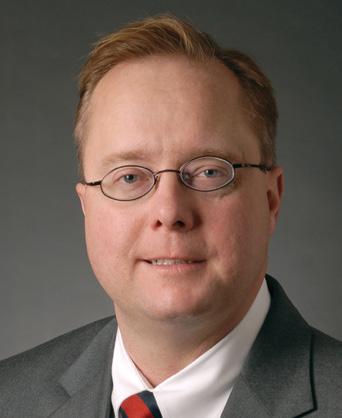
CPAs often serve as experts. Virtually everything a CPA does requires expert training, analysis and thought. In tax cases, a CPA is frequently called upon to testify as an expert. Often, I am asked how to prepare for and appropriately testify as an expert.
What is expert testimony?
Testimony, in its broadest sense, is far more than being deposed or called as a witness at a trial. Testimony can be as informal as answering an IRS agent’s questions or as formal as testifying under oath at a trial.

On Balance September | October 2023 26 wicpa.org
“
{ Tax Practice | CPA as expert }
Testimony can be as informal as answering an IRS agent’s questions or as formal as testifying under oath at a trial.
The CPA has a unique set of skills, knowledge and experience. Additionally, the CPA often has a deep understanding of the taxpayer. The CPA also has ethical obligations that require the CPA to provide fair and competent tax advice (see AICPA, SSTS Nos. 1 and 7 and Treasury Dept., Circular 230). Thus, the CPA is often asked to explain, opine or testify on a set of facts or legal conclusions. For example, the CPA may be called upon to explain how the expenses of a taxpayer are ordinary and necessary. The CPA may be asked to determine the value of a business. Or the CPA may need to evaluate whether a taxpayer meets the requirements to claim the research credit under I.R.C. Section 41.
These requests often put the CPA in the position of being a neutral and credible expert. Often, I have presented the analysis of a taxpayer’s CPA to the IRS, in order to show that the originally reported tax return position is correct and should not be adjusted by the service. The expert testimony of a CPA can be a very powerful tool when handling a tax case.
Engaging a CPA as an expert

It can be beneficial for the attorney to retain the CPA/ expert. This is common in valuation cases but also in other cases. In order to keep communications with the CPA confidential, the attorney will retain the CPA through the use of an engagement letter, which is often referred to as a “Kovel Letter.” The name is derived from U.S. v. Kovel, 296 F. 2d 918 (2nd Cir. 1961).
Kovel is the first in a line of cases that hold that when a lawyer retains an expert, such as a CPA, for purposes of facilitating communications between the lawyer and the lawyer’s client, those communications remain attorney/client privileged (i.e., they cannot be disclosed without the consent of the client) until the client decides to waive that privilege. The critical element in this relationship is that the reason for retaining the CPA is to facilitate communications with the client. Thus, simply retaining a CPA, but not documenting that the CPA is facilitating communications between the lawyer and client (e.g., the CPA simply speaks directly with the client without the lawyer’s involvement), may result in the taxing authorities challenging the confidentiality of communications made to the CPA.
Kovel Letters are used routinely when a CPA prepares a valuation report (i.e., an appraisal) or any type of expert opinion. It is important to note, however, that once the
report or opinion is final, if it is disclosed to a third party (for example, it is attached to a gift tax return, Form 709), the attorney/client privilege is waived. The report and all communications that led to the report or opinion are no longer attorney/client privileged.
An expert in the context of an IRS interview
The IRS will often seek to interview the taxpayer’s expert. It has become common for the IRS to interview both the taxpayer and the CPA. The IRS often wants to interview the CPA so that it can determine the basis for positions taken on a tax return. It may also need the CPA’s help in understanding the return. Further, if the IRS asserts a Section 6662 Accuracy-Related Penalty, the IRS will want to identify whether the taxpayer relied on the CPA.
27 On Balance September | October 2023 wicpa.org
“
The expert testimony of a CPA can be a very powerful tool when handling a tax case.
When preparing for an IRS interview, certain guidelines come to mind. These are as follows:
• Answer the question, but don’t necessarily volunteer further information.
• Be truthful.
• Any interview can always be stopped. If counsel is present, always feel free to take a break and confer with counsel.
• It’s okay to say, “I don’t know,” or “I don’t recall.”
• Never guess.
An expert in Tax Court
Should a case proceed to Tax Court, the CPA is often called as an expert witness. The CPA applies the facts to the applicable tax law and reaches an expert opinion. Examples include a CPA who opines as to value (i.e., issues a valuation report); a CPA who opines as to the application of the research credit; or a CPA who, based upon the CPA’s knowledge and expertise, opines on an industry standard or practice.
When testifying in court, there is a distinction between a lay witness and an expert witness. A lay witness is a witness who testifies about the facts of the case. An expert witness considers the facts and reaches an expert opinion. A CPA may testify as both a lay and expert witness in the same case.

When the CPA testifies as a lay witness, the CPA is called to the witness stand and is directly examined by the taxpayer’s attorney. The CPA is then cross-examined by the IRS attorney.
In Tax Court, the testimony of an expert witness is different. When the CPA tetifies as an expert, the CPA prepares a written expert report under Tax Court Rule 143(g). The report has certain formal requirements. It is submitted to opposing counsel in advance of the trial. This report is the CPA’s direct testimony.
Thus, the taxpayer’s attorney does not directly examine the CPA on the substance of the report. Rather, the CPA is called to the witness stand. The government may question whether the CPA is a true expert. Assuming the Court accepts the CPA as an expert, the written report stands as the CPA’s direct testimony. The government, however, may cross-examine the CPA if it so desires.
Thus, before trial the CPA/expert needs to prepare a very solid expert report. The CPA can work with counsel in preparing the report; however, one needs to be aware of the fact that any communication or documentation that was considered when preparing the report is potentially discoverable by the government. Thus, an attorney cannot simply help write the expert report for the CPA.
On Balance September | October 2023 28 wicpa.org
{ Tax Practice | CPA as expert }
“
The CPA has specialized expertise and knowledge and an ethical obligation to provide accurate advice and analysis.
Conclusion
It is now common for CPAs to be called upon in their capacity as experts. They are frequently asked to opine on tax matters. The CPA has specialized expertise and knowledge and an ethical obligation to provide accurate advice and analysis. These traits and obligations tend to make a CPA a very persuasive expert witness. However, this expert analysis is beneficial only when it is well developed and presented in an accurate and clear manner. Thus, it is important that before a CPA testifies as an expert, the taxpayer, CPA and counsel (where appropriate) discuss and fully understand the oral and documentary evidence that will be at issue.


29 On Balance September | October 2023 wicpa.org
Join the WICPA Board of Directors! The WICPA is seeking members to serve on its board of directors. Opportunities include:
Staying up to date on professional issues
Providing strategic governance in accordance with the WICPA strategic plan, mission and vision
Acquiring new leadership and training skills Applicants must be WICPA CPA members in good standing. A “CPA member” is defined as a WICPA member who has obtained a certificate as a CPA from the Accounting Examining Board of the State of Wisconsin, or from a similar legally constituted authority in any other state, possession or territory of the United States or the District of Columbia. To apply, visit wicpa.org/BoardApplication through Nov. 15, 2023. Questions? Contact tammy@wicpa.org.
Michael G. Goller, Esq., is a shareholder with Reinhart Boerner Van Deuren s.c. in the firm’s Tax and Corporate Law Practices. He handles a wide variety of tax-related issues, including complex income and estate and gift tax controversies. Contact him at 414-298-8336 or mgoller@reinhartlaw.com.
•
•
•
kudos
Curtis Bach, CPA, has been promoted to tax director at Hawkins Ash CPAs in the firm’s Medford office.
Jill Boyle, CPA, has been promoted to not-for-profit industry vertical leader and director of not-for-profit tax at Sikich in Brookfield.
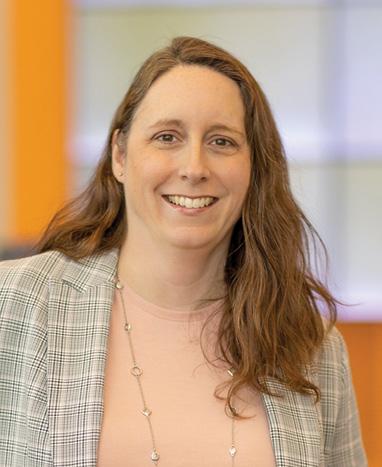
Jason Bruner, CPA, MBA, VP of finance at Naviant Inc., has received the CFO of the Year award in the medium-sized company category from Madison’s In Business magazine.
Lisa Cribben, CPA, ABV, ASA, CMA, has joined Hawkins Ash CPAs as a partner and will lead the firm’s valuation services group.
James Emmerich, CPA, has been promoted to principal at SVA Certified Public Accountants.
Brian Falk, CPA, has been promoted to senior manager on the nonprofit team at RitzHolman CPAs, Milwaukee.
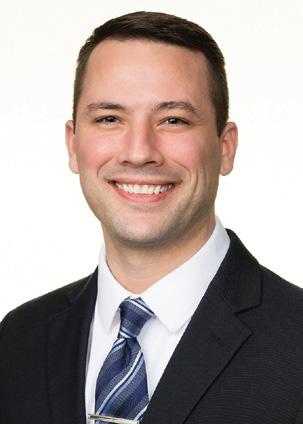
Michael Friedman, CPA, JD, tax director at Scribner, Cohen & Co. S.C., has been reappointed to Wisconsin’s Accounting Examining Board.
Tyler Haanen, CPA, has been promoted to senior accountant on the nonprofit team at RitzHolman CPAs, Milwaukee.
Sheanne Hediger, CPA, has been promoted by Baker Tilly US LLP to assurance partner in the public sector. She is located in Eau Claire.
Brett Killion, CPA, associate professor of accounting at Lakeland University, was recognized with the 2023 Underkofler Excellence in Undergraduate Teaching award, presented through the Alliant Energy Foundation Inc. and the Wisconsin Foundation for Independent Colleges Inc.
Trenton Kleist, CPA, has been promoted by Baker Tilly US LLP to assurance partner in the real estate and construction practice. He is located in Madison.
Joseph Koppelkam, CPA, has joined Elite Jets, a private charter flight company in Florida, as director of finance.
Cari Larsen, CPA, has joined Verve Credit Union as controller.
Nicole Malueg, CPA, has been named co-director of training at Hawkins Ash CPAs. She is currently a manager in the firm’s Manitowoc office.

Craig Maternowski, CPA, has been promoted to principal at SVA Certified Public Accountants.
Andrew McCarty, CPA, has been promoted by Baker Tilly US LLP to tax partner at Baker Tilly Advantage in Appleton.
Kalisa Mortag, CPA, a manager at KerberRose CPAs, has received the 2023 Volunteer of the Year award from the St. Germain Chamber of Commerce. Mortag holds a supervisor position on the St. Germain town board and chairs the Parks and Recreation Committee.
Joan Phillips, CPA, a partner at Deloitte & Touche LLP in Milwaukee, has been reappointed to Wisconsin’s Accounting Examining Board.
Rhett Reuter, CPA, MT, has been promoted to principal at SVA Certified Public Accountants..
Diane Rieder, CPA, CCE, has been promoted to senior vice president at Premier Financial Credit Union. Her new title includes roles as CFO and chief information security officer.
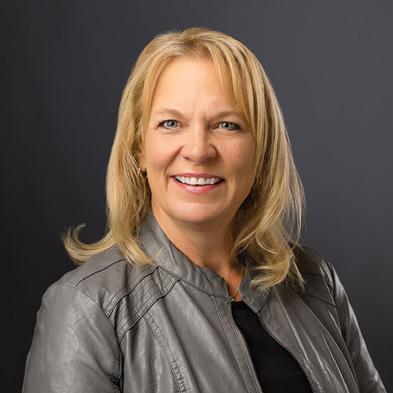
Monica Rohe, CPA, has been promoted to audit supervisor on the nonprofit team at RitzHolman CPAs, Milwaukee.
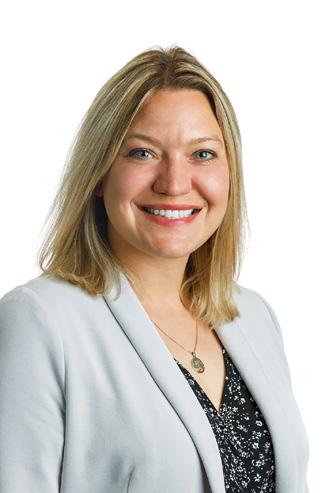
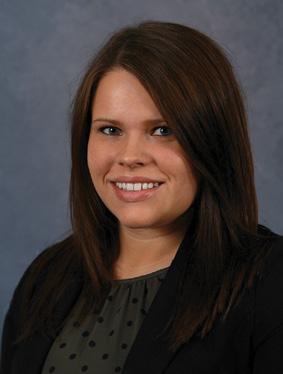
Mike Schafer, CPA, has been promoted to manager on the tax team at RitzHolman CPAs, Milwaukee.

Peggy Stebbins, CPA, was named executive vice president and chief operating office of PremierBank in Fort Atkinson.
Glen Stiteley, CPA, has joined Verve Credit Union as chief financial officer.
Arnie Stueber, CPA, MBA, has joined the Hazelden Betty Ford Foundation in Minnesota as chief financial and administrative officer.

On Balance September | October 2023 30 wicpa.org
Brett Killion Jill Boyle Jason Bruner Lisa Cribben
Cari Larsen Nicole Malueg Kalisa Mortag
Adam Updike, CPA, has been promoted to senior manager on the tax team at RitzHolman CPAs, Milwaukee. Brooke Weitzer, CPA, has been promoted by Baker Tilly US LLP to tax partner in the commercial sector. She is located in Madison.


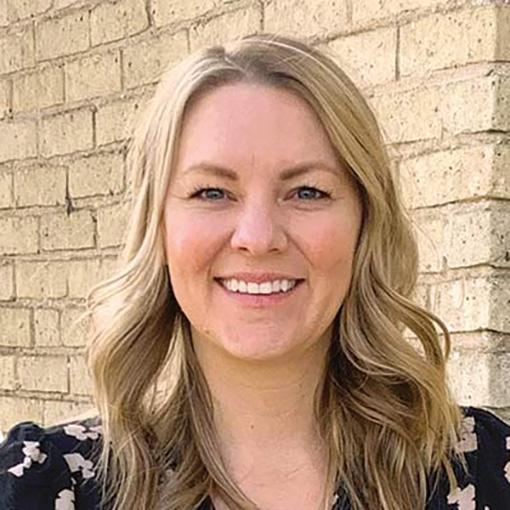
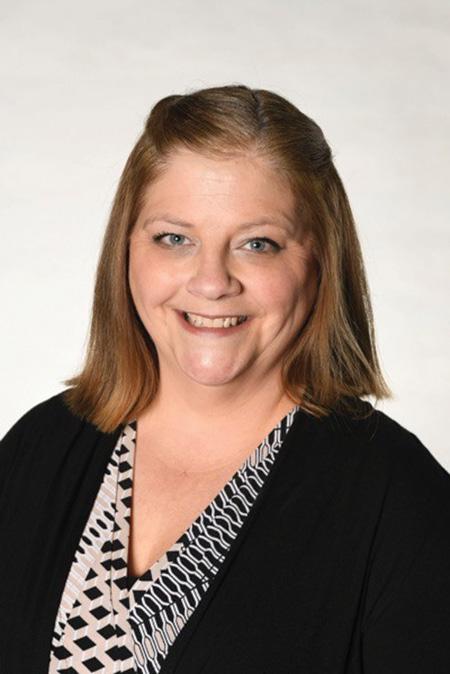
THE CURRENT CPE REPORTING PERIOD ENDS DEC. 31, 2023
Reporting Period: Jan. 1, 2022 – Dec. 31, 2023
CPE Requirement: 80 total CPE credits
Ethics Requirement: 3 Ethics CPE credits
Effective Sept. 1, Milwaukee-based Wipfli LLP has merged with Clayton & McKervey, a Southfield, Michigan, firm specializing in the automotive and technology industries. The merger expands Wipfli’s presence in Michigan and adds 12 partners and 93 shareholders and associates to its existing 318 partners and principals and 3,076 associates (per Accounting Today).
about CPE requirements.
31 On Balance September | October 2023 wicpa.org
Want your new job, promotion or award mentioned in Kudos? H Email your announcement and photo in JPG format to mtzinzow@icloud.com. H
Visit wicpa.org/CPErequirements
information
Diane Rieder Peggy Stebbins Glen Stiteley Arnie Stueber
for more
ATTENTION!
FIRM NEWS
Valuing Cryptocurrency and Digital Assets
By Kenneth A. Heaslip, CPA, CGMA, MBA, MS
As more companies invest in digital assets, they are looking to CPAs to help them with the accounting treatment — and CPAs are looking for guidance on how to audit such investments. To date, there has been little authoritative guidance on the issue.
While the profession awaits formal accounting guidance from the Financial Accounting Standards Board (FASB), the American Institute of CPAs (AICPA) established the Digital Assets Working Group. The group has issued nonauthoritative guidance for accountants and auditors: a 2020 comprehensive practice aid and subsequent periodic updates. The most recent aid — which can be accessed by AICPA members for free at aicpa.org — was issued Feb. 28, 2023, and is 81 pages long.
On March 23, the FASB issued a much anticipated exposure draft proposing standards for the treatment of cryptoassets. It is hoped the final standard will be issued by year-end 2023.

Accounting treatment
When the AICPA assessed the accounting treatment, they addressed several questions:
• What type of asset is a digital asset?
• Should it be carried at cost or fair value?
• How should impairments be determined?
While most people consider cryptocurrency to be an investment, there are significant differences between financial
On Balance September | October 2023 32 wicpa.org
{ Accounting & Auditing | Digital assets }
instruments and digital assets. The primary difference is that financial instruments are backed by a government or business entity. The entity has revenues, income and net assets that support the instrument’s value. Digital assets do not provide the asset holder with any enforceable rights to or claims on underlying goods, services or other assets. For that reason, digital assets are classified as intangibles.
Under Generally Accepted Accounting Principles (GAAP), intangibles are valued at cost, those with a useful life are amortized over its life, and they are tested annually for impairment. This has led the AICPA to conclude that digital assets would be treated the same; since there is an indefinite life, they should not be amortized. When impairments are recognized, the asset should be written down, and recovery of impairments will not be allowed.
When the FASB took on the digital asset project, they quickly realized that not all digital assets are the same. They decided to limit the project to fungible assets, not address nonfungible ones, and to rename the topic as cryptoassets. Fungible is defined as an item that is readily interchangeable with an identical item at a transparent rate. Under this definition, nonfungible assets such as nonfungible tokens (NFTs) are not within the scope of the exposure draft. For NFTs, accountants should continue to use AICPA guidance. The FASB’s proposal follows the AICPA conclusion that cryptoassets should be recorded as indefinitelived intangible assets. However, unlike other intangibles, they will be presented at fair value, limiting the need for impairments.
The FASB proposes that any changes in fair value of cryptoassets be recognized in net income. Transaction costs to acquire them would be treated as an expense when incurred unless applicable industry-specific guidance requires capitalization of such costs. Cryptoassets must be presented separately from other intangible assets on the balance sheet, and changes in fair value are to be shown separate from other intangibles on the income statement.
The FASB recognizes that there will not be many changes to the statement of cash flows, but if cryptoassets are received as noncash consideration in the ordinary course of business and converted immediately into cash, the transaction should be recorded as cash flow from operating activities.

The exposure draft provides for disclosures of the nature of the cryptoasset, the presentation of fair value and cost either in the aggregate or individually, depending on the materiality. Any restrictions should be disclosed, and roll-forward information will be required. The disclosures should disclose the line item in the income statement where gains and losses are presented. Finally, the disclosures should include the difference between sale price and the cost basis as well as a description of the
activities that resulted in the disposition and the method for determining cost basis.
The new standard will apply to all entities, and the implementation date has not been determined. Cumulativeeffect adjustments to retained earnings will be necessary as of the beginning of the annual reporting period of adoption.
Auditing issues
Auditing has unique challenges. The nature of digital assets makes it difficult for an auditor to confirm their existence, value the less-traded assets and determine internal controls. The demise of FTX Trading Ltd. is a perfect example of the risks associated with audits. In that case, entities deposited their cryptocurrencies with FTX for secured holding. FTX regularly reported portfolio status to their depositors. The controls and reporting turned out to be poor and false. FTX comingled depositor assets with those of their own, improperly withdrew the deposits and lost millions of dollars in depositor assets. To date, it has not been determined who took the assets and where they are now. Any confirmations offered by FTX are unreliable.
For entities that choose to hold the assets in their own wallets, it is not practical to obtain third-party verification of the assets due to the secrecy of the blockchain method of storing the assets.
33 On Balance September | October 2023 wicpa.org
“
While most people consider cryptocurrency to be an investment, there are significant differences between financial instruments and digital assets.
The AICPA states that audit risks should be addressed in client acceptance and continuance, risk assessment and processes and controls, laws and regulations, and related parties. Their guide is a comprehensive approach for auditors. It consists of the following:
• Overview
• Auditor skill sets and competencies
• Management skill sets and competencies
• Management integrity and overall business strategy
• Processes and controls, including information technology
The AICPA document is titled as an aid for auditors, but it also has implications for nonattest services offered by practitioners. Practitioners should evaluate self-review, management participation and advocacy threats before accepting a client. Auditors need to stay apprised of regulatory, industry, technological or financial reporting developments. In particular, they should identify relevant professional standards that apply to the engagement. The firm should maintain a
competent staff at all levels. Risks should be adjusted as new issues are identified, and training should be continuous.
Firms should develop specific procedures that will address the many challenges in digital assets. The procedures should encompass all areas, such as identifying policies and procedures, building awareness among firm personnel, communication, training and quality control.
The AICPA practice aid is an excellent tool for any entity with digital assets and firms that service those entities. It is thorough and offers a framework for firm quality control procedures. The document is an important nonauthoritative tool. The FASB’s proposed changes will be welcomed by many stakeholders, but until the ASU is issued, the provisions in the draft are not GAAP and should not be implemented.
Kenneth A. Heaslip, CPA, CGMA, MBA, MS, is a director at Cullari Carrico LLC, CPAs, managing member of Kenn Heaslip Seminars LLC and a lecturer at Queens College in New York. Contact him at kheaslip@comcast.net.

Investors have survived market swings and corrections before. But a twinge of uncertainty may have you wondering if you should get another opinion to help confirm your wealth is in the right place. That’s why we’ve made it as easy as we can to have a complimentary, face-to-face meeting with an advisor.

On Balance September | October 2023 34 wicpa.org
{ Accounting & Auditing | Digital assets } Wells Fargo Advisors is a trade name used by Wells Fargo Clearing Services, LLC, Member SIPC, a registered broker-dealer and non-bank ailiate of Wells Fargo & Company. ©2022 Wells Fargo Clearing Services, LLC.CAR-0723-00808 Are you still on track for retirement?
Reprinted from New Jersey CPA magazine with permission from the New Jersey Society of CPAs.
James K. Schneider, CFP® Senior Vice President - Investments 20800 Swenson Dr Ste 200 Waukesha, WI 53186
(262) 798-3759
Schneider Wealth Management Group of Wells Fargo Advisors • NOT FDIC Insured • NO Bank Guarantee • MAY Lose Value Investment and Insurance Products:
Direct:
jim.schneider@wellsfargoadvisors.com wellsfargoadvisors.com
PROTECT YOUR FUTURE AS A CPA
SUPPORT THE WICPA POLITICAL ADVOCACY EFFORTS
Legislators see WICPA members as trustworthy experts, who are knowledgeable and objective when it comes to business and economic issues that impact our state.
As the WICPA continues to navigate through the diverse political climate, we will need to build and invest in new relationships and maintain the current ones that are important to support, protect, defend and defeat policy impacting the accounting profession and Wisconsin businesses. Your financial resources are needed to contribute to election campaigns and sustain our voice in state government.
PROTECTING YOUR INTERESTS
We anticipate proposed legislation in the following areas:
• Deregulation and elimination of licensing requirements for CPAs and other highly technical professions that would harm Wisconsin businesses and clients.
• Imposing sales tax on professional services that are critical to the well-being of Wisconsin residents and businesses.
• Continued simplification of statutes to conform to the federal tax code so CPAs, taxpayers and businesses benefit from clarification and avoid confusion.
• Evaluation of interest rates on refunds and assessments.
STRENGTH IN NUMBERS
There is strength in numbers and unified voices of WICPA members across the state make the difference. Your voice and your financial participation are key. Contributions to participate in the legislative process to promote responsible law changes are a cost of doing business, similar to insurance.
CONTRIBUTE TO CPAC AND/OR LIF TODAY
What is the difference?
Contributions to the WICPA Political Action Committee (CPAC) are used to help get elected political candidates who understand and support our positions. Informed decisions by the WICPA are made about which candidates to support by closely monitoring the political climate, candidates’ platforms and their track records.
Contributions to the Legislative Involvement Fund (LIF) are used only with your consent to help get elected position candidates who understand and support our positions. We will contact you for permission to use your funds for a particular candidate OR you can designate the State Representative, Senator or Governor or preferred political party on the contribution form.
Both forms of contributions are important for success. Amounts needed to contribute to legislators are usually in excess of PAC limits. Contributions to LIF provide the additional financial funding needed to support legislators and our positions. We recommend larger contributions are better suited to LIF and smaller contributions to CPAC.
35 On Balance September | October 2023 wicpa.org
TO CONTRIBUTE, VISIT WICPA.ORG/GIVE/CPAC-LIF.
5 Common-Sense Steps to Successful Networking
Daniel Kochka, CPA, CFE, MBA
As business professionals in an increasingly competitive field, the role of the CPA is ever expanding. Networking might be neither a traditional nor instinctual skill, but it is vital for seeking new business and expanding your network.
If the thought of networking is uncomfortable, rest easy, because the best way to grow your client base or business network is also the easiest. You don’t have to take a course in selling or learn a series of pressure tactics. The most critical component of networking is connection. Every CPA has multiple relationships in their daily lives and, through these connections, can build significantly larger networks.
Networking can be easy, comfortable and even enjoyable when you follow these five steps:
1. Know yourself
It is imperative to understand your style. Taking time to reflect on who you are, how you relate to others and what type of socializing you are most comfortable with will go a long way toward building a thriving network. Answering questions such as, “Am I more formal or casual?” “Is it easier for me to strike up a conversation in a small-group setting or circulate in a large-group event?” Your answers will help you facilitate opportunities to network effectively. Knowing your style and following your interests will lead you to likeminded individuals with whom you can connect easily, perhaps through sports, community or volunteerism.
2. Know your target
Once you know how you are most comfortable making connections, you will want to think about groups to target. Clarity about the clients you seek or contact you want to make will help you plan and use your networking time effectively. You can begin in your local area, and expertise in a particular industry is undoubtedly an advantage. Consider joining local organizations, including chapters of national organizations, representing industries in which you specialize. Participation
can include speaking at meetings and conferences to share your expertise in financial matters of importance to those in attendance. Joining and, more importantly, actively participating in organizations and lending your services in support of their mission and goals builds the most robust business relationships, those that are mutually beneficial.
3. Prepare
Once you have identified a potential target, learning as much as you can about them before making contact will foster their confidence and yours. Your preparation and understanding of how a prospect’s business and industry function and the significant challenges and requirements they face will allow them to recognize your value to them. Randomly contacting people is rarely productive; however, being prepared will help you move your targets from prospects to clients.
4. Be authentic
Being genuine and concentrating on how you can solve a prospect’s challenges will not only prove more productive but will also be more gratifying. Focusing on helping others by providing dedicated quality service instead of thinking about networking as a sales initiative will help you develop solid professional relationships.
On Balance September | October 2023 36 wicpa.org { Professional Development | Networking }
“
Networking might be neither a traditional nor instinctual skill, but it is vital for seeking new business and expanding your network.
5. Follow up and follow through
Consistent follow up demonstrates your integrity. If you have offered to provide information or make an introduction, be sure to do it as expediently as possible. It takes time and intentional action to build relationships and make them flourish. Seeds planted today can have far-reaching benefits in the future.

We all network daily, intentionally or not. However, when you consciously develop new relationships, you’ll see the most


progress. Reap the rewards when you take the initiative, put yourself forward with integrity and authenticity, communicate effectively and follow up consistently. In our increasingly technology-driven world, never underestimate the power of human connection.

37 On Balance September | October 2023 wicpa.org
Reprinted from New Jersey CPA magazine and used with permission of the NJCPA.
Daniel Kochka, CPA, CFE, MBA, is a manager at HBK CPAs & Consultants. Contact him at dkochka@hbkcpa.com.
5 Tips for Creating an Impactful Off-Site Team Retreat
When was the last time you pulled your team away from the daily grind to work on the team, not just as a team?
By Jon Lokhorst, CPA, PCC
The best leaders recognize the need to get off the hamster wheel of never-ending operational tasks to focus on building a cohesive, high-performing team. An off-site retreat is one of the best ways to do just that.
While you may consider an off-site retreat to be just a warm, fuzzy nice-to-have, research shows that there’s plenty of value in investing in in-person team development. For starters, as many as 80% of jobs are now in remote or hybrid work arrangements, according to Gallup. Additionally, according to “The Great Resignation Research Report” from Plan Beyond, participants ranked a bad relationship with their supervisor and a lack of respect for colleagues as two of the top four reasons for quitting their jobs.
The good news? An off-site retreat can help resolve these startling trends and build back the “know, like and trust” factor among your team members. To help you get started, here are five tips for creating an impactful retreat experience for your team.
Create an environment conducive to team building
Do everything possible to escape the office and the distractions and interruptions that reside there. Although your team might welcome a trip to the Caribbean, you don’t need an exotic location to create energy and spur creativity. Of course, there’s the typical hotel or corporate meeting facility. But I’ve also facilitated client retreats at a coastal resort, public library, golf club, local community center and nearby church. The key is to get away to a place that suits your team!
Additionally, take some time to prepare and set up your space in advance to ensure it’s conducive to an engaging, lively discussion. This may include the following:
• Distributing an agenda of topics and activities that’ll help your team know what to expect and help them determine whether they need to plan for your discussions
• Providing healthy and not-so-healthy snacks and beverages to accommodate a variety of tastes
• Enlisting interested team members in planning these logistics, as their involvement will encourage their ownership of the experience
Use assessments to provoke insights about workplace tendencies
Assessment tools offer significant insights that provoke self-discovery and an understanding of differences among team members. Some of the more well-known and widely used tools on the market are DiSC, Myers-Briggs and StrengthsFinder. In fact, you might already have profile reports on file from one of these assessments. I prefer the combined Path4 and Path6 profiles from RightPath Resources due to their narrower focus on workplace behavioral preferences versus general personality traits.
On Balance September | October 2023 38 wicpa.org { Leadership | Team building }
“
Do everything possible to escape the office and the distractions and interruptions that reside there.
1 2
Assign the assessment as advance preparation for the retreat, providing team members with a self-debriefing guide to help them identify strengths, struggles and potential blind spots. The assessment can also help your team members identify their keys to productive working relationships, leadership styles, communication preferences and approaches to conflict and change.
3
Appreciate individual differences and recognize team dynamics
As you provide team members with opportunities for self-discovery from their profiles, invite them to share these insights with their colleagues. This provides an opportunity

for team members to better understand how their differences and preferences can create breakdowns in communication and relationships, as well as how they can complement their strengths and create opportunities for collaboration to move crucial team initiatives forward.
For example, a highly extroverted team member might see the value of providing time and space for their introverted colleagues to think through challenging questions and issues before jumping into a discussion. Likewise, the more structured, detail-oriented team member can appreciate the creative thinking that more unstructured, spontaneous teammates bring to the table.
39 On Balance September | October 2023 wicpa.org
favorite pastimes. I recall how my neighborhood friends and I would gather at Johnny’s sandbox, each of us in our own corner to play with Hot Wheels, Matchbox cars and Tonka trucks. Our playtime started with all of us getting along well, but it often devolved into territorial battles, arguments, harsh words and someone leaving the sandbox in tears. It usually required parental involvement to restore order, remind us of healthier behavior and obtain commitments to play well together.
Leading your team can feel the same way at times. After all, adults aren’t that much different from kids when conflict arises — just bigger problems and bigger bodies. As such, your team needs to work together to create rules of engagement for healthy communication and other team behaviors. Rather than having your team follow a list of rules and expectations, I suggest having each member state and make positive commitments to one another. Here are a few examples:
• I commit to responding to my teammate’s email or voicemail message within 24 hours, even if it’s simply to acknowledge that I received it and to estimate when I can provide a more thorough response.
• I commit to addressing disagreements or conflicts directly with the person(s) involved rather than involving third parties who are part of neither the problem nor the solution.
• I commit to approaching feedback from my teammates with openness and teachability rather than being defensive.
activities. Axe-throwing, “improv night,” go-kart racing, an escape room, Whirlyball and a cooking class have been hits among my recent clients.
One of my favorite activities was with a health care team that ended their first afternoon of a two-day retreat with a “sip and paint” event (i.e., tasting wine while painting under the tutelage of an experienced art instructor). I kept my lighthouse painting as a memory from that event — miraculously, you can even tell it’s a lighthouse!
Notably, these playful activities offer a great opportunity to kick off discussions at your more structured team gatherings. For example, you can incorporate a debriefing of the activity in your discussions and focus on observations of team dynamics in action and how they can shape a more healthy, productive team experience.
Soon after the retreat, conduct an after-action review with your team: Identify what went well, what didn’t and how to improve the experience for next time. Most importantly, make your retreat a regular experience (at least annually) to build a healthy team culture that no one wants to leave.

On Balance September | October 2023 40 wicpa.org
or
Jon Lokhorst, CPA, PCC, is an executive leadership coach and owner of Lokhorst Consulting in Andover, Minnesota. Contact him at 612-381-6275
jon@lokhorstconsulting.com.
{ Leadership | Team building } 4 5 Reprinted from Insight magazine with permission from the Illinois CPA Society.

NOMINATE SOMEONE YOU KNOW FOR AN EXCELLENCE AWARD! Young Professional Accounting Educator Accounting Student Business & Management CPA in Public Practice H H H H H H H H H Community Service Distinguished Career Diversity & Inclusion Woman to Watch AWARDS 2024 WICPA Submit your nomination at wicpa.org/awards by Nov. 10, 2023. Recipients will be announced in January and honored at the Member Recognition Banquet & Annual Business Meeting on May 9, 2024.

The Magazine for Wisconsin CPAs PRSRT STD U.S. POSTAGE PAID Milwaukee, WI Permit No. 5845 Wisconsin Institute of Certified Public Accountants W233N2080 Ridgeview Parkway, Suite 201 Waukesha, WI 53188






 By Ken Wysocky
By Ken Wysocky

 By Christopher Semrow, CPA, CISA
By Christopher Semrow, CPA, CISA







 Paul Baniel, CPA, CGMA
By Ken Wysocky
Paul Baniel, CPA, CGMA
By Ken Wysocky

























 By Chris Semrow, CPA,
By Chris Semrow, CPA,




































